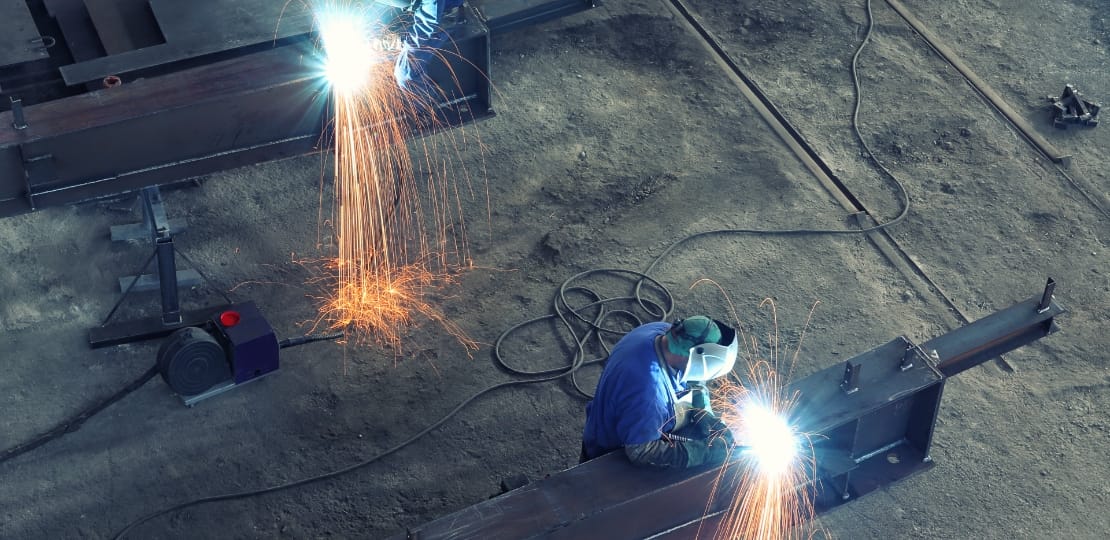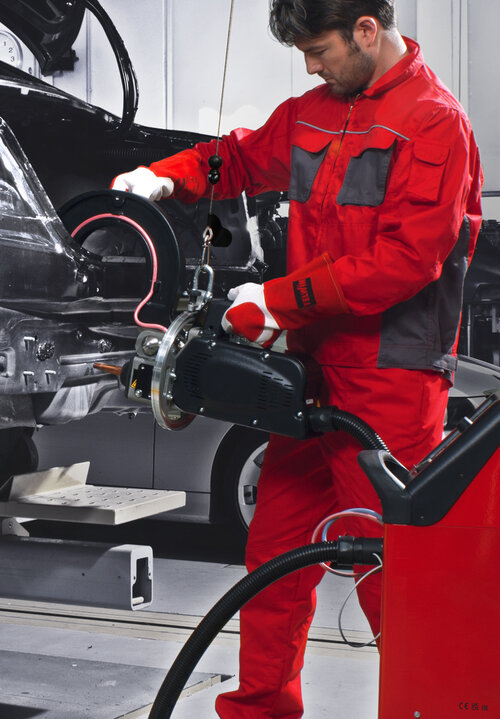Typical Welding Repair Work Issues and Exactly How to Address Them Efficiently
Welding repair work typically run into a series of problems that can endanger the honesty of the final item. Typical issues include insufficient penetration, porosity, and imbalance, amongst others. Each defect presents distinct challenges that call for specific approaches for resolution. Recognizing these concerns is vital for welders aiming to improve their skills and results. This discussion will certainly explore these common welding repair service concerns and reliable approaches to resolve them.
Poor Infiltration
Insufficient penetration happens when the weld metal falls short to totally fuse with the base product, resulting in weak joints and prospective architectural failings. This problem commonly stems from inadequate warm input, wrong electrode angle, or incorrect welding rate. Welders might experience insufficient penetration due to a mistake of the needed specifications for a particular product thickness or kind. Furthermore, contamination on the base product's surface area can hinder reliable bonding, exacerbating the issue. To deal with insufficient penetration, welders must guarantee ideal setups on their tools and maintain a clean work surface. Normal assessment of welds is recommended to recognize any shortages early, permitting timely improvements and the prevention of endangered structural integrity in welded settings up.
Porosity
Porosity is an usual problem in welded joints that manifests as tiny gas bubbles caught within the weld steel. This problem can endanger the integrity of the weld, bring about reduced stamina and possible failing under anxiety. Montana Mobile Welding and Repair Welding. Porosity commonly develops from contamination, moisture, or inappropriate welding strategies, which permit gases to escape right into the molten weld pool. To attend to porosity, welders ought to ensure correct surface area preparation, preserve a clean working atmosphere, and use suitable welding specifications. Furthermore, selecting the ideal filler material and shielding gas can mitigate gas entrapment. Normal inspection and screening of welds can aid recognize porosity early, guaranteeing prompt rehabilitative actions are taken, thus maintaining the top quality and reliability of the welded framework
Imbalance
Imbalance in welding can arise from various elements, consisting of inappropriate setup and thermal development. Recognizing the source is important for reliable resolution. Numerous improvement methods are available to realign components and guarantee architectural honesty.
Reasons for Imbalance
Welding misalignment usually originates from a range of underlying problems that can endanger structural honesty. One main reason is incorrect fit-up of parts prior to welding, which can lead to voids and irregular surface areas. Variations in thermal development throughout the welding process can likewise cause distortion, particularly if the materials being signed up with have various coefficients of growth. Additionally, insufficient fixturing and clamping may stop working to hold components safely in place, leading to motion throughout welding. Poorly kept equipment, consisting of welding equipments and devices, may introduce variances in the weld grain, further contributing to imbalance. Finally, operator error, coming from insufficient training or experience, can likewise play a substantial function in developing misaligned welds.
Improvement Methods Available
Dealing with misalignment effectively needs a combination of corrective strategies customized to the particular problems available. One typical technique is the use of fixtures or jigs to hold parts in the right position during welding, guaranteeing constant alignment. Additionally, preheating the materials can help lower distortion and improve fit-up. For considerable misalignment, mechanical adjustment strategies, such as utilizing hydraulic jacks or clamps, can be utilized to fix the placement before welding. Post-weld warm therapy might likewise be needed to soothe anxieties brought on by imbalance. Careful inspection and modification throughout the arrangement phase can prevent misalignment concerns from ending up being significant problems, promoting a smoother welding procedure and enhancing overall structural integrity.
Distortion
Distortion is a typical challenge in welding that can arise from different elements, consisting of uneven cooling and heating. Understanding the root causes of distortion is essential for executing reliable avoidance techniques. Resolving this problem not only boosts architectural integrity but likewise boosts the total quality of the weld.
Sources of Distortion
When based on the extreme warmth of welding, products usually go through adjustments that can bring about distortion. This sensation largely develops from thermal development and tightening throughout the welding process. As the weld location warms up, the product increases; upon air conditioning, it gets, which can develop internal stresses. In addition, irregular heating throughout a workpiece can aggravate these anxieties, leading to warping or flexing. The type of product likewise plays a substantial duty; steels with varying thermal conductivity and coefficients of growth might react in different ways, resulting in unpredictable distortions. Poor joint layout and inadequate fixturing can add to misalignment throughout welding, boosting the likelihood of distortion. Understanding these reasons is important for reliable welding repair and prevention methods.
Prevention Techniques
Reliable prevention strategies for distortion throughout welding focus on regulating warm input and making sure appropriate joint style. Maintaining a regular warm input assists to lessen thermal development and tightening, which can result in distortion. Using methods such as pre-heating the work surface can additionally reduce the temperature level gradient, advertising consistent home heating. Additionally, choosing ideal joint layouts, such as T-joints or lap joints, can improve security and reduce stress focus. Applying appropriate fixturing to safeguard the work surfaces in location additionally aids in preserving alignment during the welding procedure. Ultimately, staggered welding series can disperse warm much more evenly, protecting against localized distortion. By applying these methods, welders can greatly decrease the probability of distortion and enhance the general high quality of their welds.
Splitting
Splitting is a typical concern run into in welding fixings, commonly arising from different variables such as inappropriate cooling prices, material choice, or insufficient joint prep work. The occurrence of splits can greatly compromise the integrity of the weld, leading to potential failures throughout operation. To address this problem, welders have to initially assess the root causes, making sure that materials are suitable and properly chosen for the specific application. Furthermore, managing the cooling rate during the welding process is vital; rapid cooling can cause tension and bring about splitting. Appropriate joint design and prep work additionally add to reducing the risk. Carrying out these techniques can boost weld high quality and longevity, inevitably decreasing the chance of fracturing in completed weldments.

Insufficient Fusion
A significant problem in welding repair work is incomplete blend, which takes place when the weld steel does not adequately bond with the base material or previous weld passes - Montana Mobile Welding and Repair Fabrication. This issue can lead to weaknesses in the joint, potentially endangering the honesty of the welded structure. Elements adding to incomplete combination include insufficient warm laser beam welding input, inappropriate welding strategy, and contamination of the surfaces being joined. To resolve this issue properly, welders should guarantee correct pre-weld cleaning and surface area prep work, as well as readjust their welding specifications to achieve appropriate infiltration and fusion. Routine examination during the welding process can additionally assist determine incomplete combination early, enabling prompt rehabilitative measures to improve the total top quality of the weld
Overheating
While welding repair services can enhance architectural integrity, overheating presents a considerable difficulty that can cause product deterioration. Extreme warm throughout welding can change the mechanical residential or commercial properties of metals, leading to decreased toughness, boosted brittleness, and bending. This sensation is specifically crucial in high-stress applications where structural integrity is paramount. Recognizing getting too hot can entail aesthetic inspections for discoloration or distortion, as well as monitoring temperature throughout the welding procedure. To reduce the threats related to getting too hot, welders need to utilize proper methods, such as controlling heat input, adjusting travel rate, and making use of ideal filler materials. Furthermore, applying pre- and post-weld heat therapies can aid bring back material buildings and enhance the total top quality of the repair work, making certain long-term performance and security.
Frequently Asked Inquiries
What Are the Typical Indicators of a Welding Problem?

Exactly How Can I Test My Welds for High quality?
To check welds for top quality, one can use visual assessments, ultrasonic testing, and radiographic techniques. Each method assures structural stability, identifies issues, and confirms adherence to specified criteria, inevitably improving the reliability of the welded joints.
What Safety and security Safety Measures Should I Take While Welding?
When welding, one should focus on security by putting on appropriate personal protective tools, ensuring proper air flow, safeguarding flammable products away, keeping a clean office, and knowing environments to avoid crashes and injuries.
Can I Fix a Weld Without Renovating the Entire Joint?
Fixing a weld without remodeling the whole joint is feasible, depending upon the damage (Montana Mobile Welding and Repair Belgrade Fabrication). Methods such as grinding, including filler product, or making browse around these guys use of a welding procedure can successfully resolve particular problems while maintaining the bordering framework
What Tools Are Important for Effective Welding Repair Works?
Essential devices for effective welding repairs include a welding maker, have a peek at these guys cord brush, grinder, safety equipment, clamps, and filler materials. Each tool plays a crucial role in ensuring quality and security throughout the repair service procedure. Porosity usually develops from contamination, moisture, or incorrect welding techniques, which allow gases to leave right into the molten weld swimming pool. Poorly maintained tools, including welding equipments and devices, might introduce variances in the weld bead, more adding to misalignment. When subjected to the extreme warm of welding, products typically go through modifications that can lead to distortion. Breaking is an usual issue come across in welding repair work, frequently resulting from various aspects such as incorrect cooling rates, product option, or insufficient joint prep work. A significant concern in welding fixings is insufficient blend, which happens when the weld metal does not adequately bond with the base product or previous weld passes.